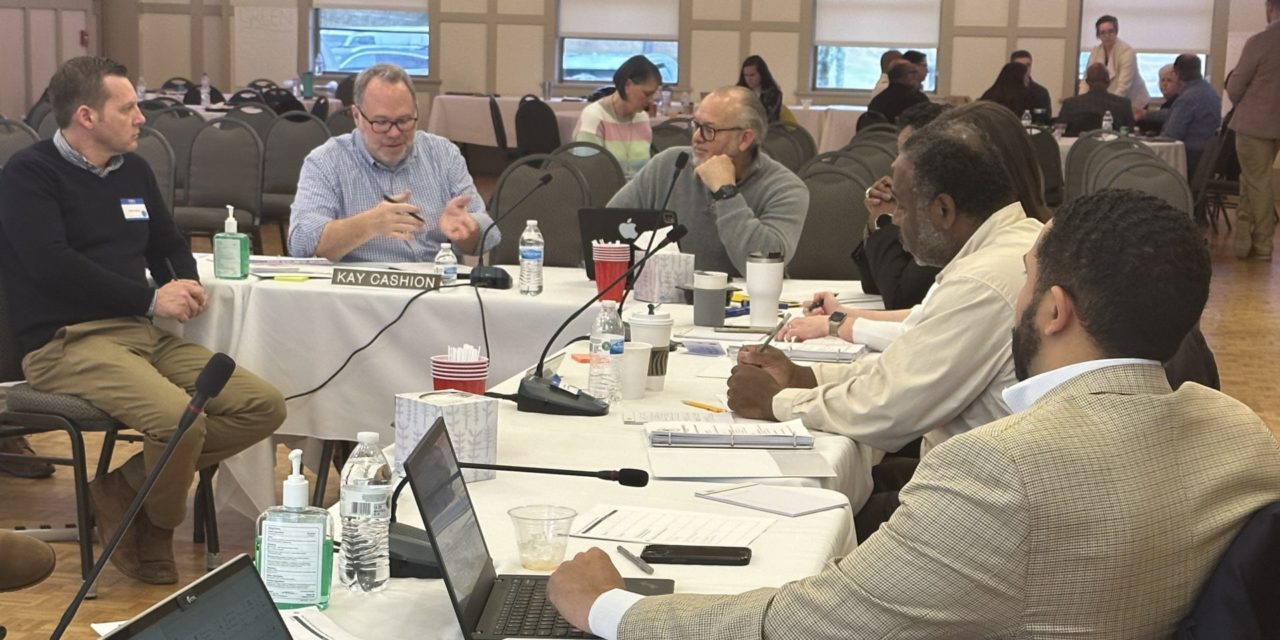Some weeks, the Guilford County commissioners don’t really earn their pay.
However, when the annual retreat rolls around, as it has now, the Board of Commissioners has two straight days of long meetings and they do put in a lot of effort.
On Thursday, Feb. 2, the commissioners met at the Bur-Mil Club in Greensboro for the first day of the retreat where the commissioners and county department directors got to do a very deep dive into the question of what Guilford County should look like in the future.
The two themes for the day were “Guilford 2023: Where Are We Now?” and “Guilford 2033: What Will We Be?”
On Thursday, the commissioners – along with about 40 county department heads and other staff – spent much of the day discussing those two questions in small groups and eventually all together.
Guilford County Manager Mike Halford said at the meeting that he wanted everyone to think about where the county should be 10 years in the future.
“How do we define the vision for the county?” he said. “What are our goals? Where do you want to be?”
The commissioners and county staff then broke up into small groups to focus on those questions.
During a break in the meetings, Halford told the Rhino Times that the nature of Guilford County government is already much different after the pandemic than before. For instance, Halford said, currently Guilford County government is putting a big emphasis on addressing the problem of homelessness. In the past, the problem was largely left to the wide network of community groups that provide help and alternatives to those with no home. In recent months, Guilford County has taken a lead role on the issue.
Halford also said that this is a rare time in county history because Guilford County finally has some additional funds to address problems that have lingered for years. Guilford County received over $100 million in American Rescue Plan Act money from the federal government, which it is using to combat homelessness, improve water systems across the county and enhance other infrastructure among other things.
Guilford County is also receiving more than $20 million in the coming years from a lawsuit against opioid makers and distributors, and the county plans to use that money to combat opioid abuse.


Lol, with their leadership, the county population in 2033 will be less as people will have moved to a better place to live.
Homelessness is a good topic to address.
More & more school bonds = more homelessness. John Q. Taxpayer is tapped out.
Perhaps they should ask the people who’d like to live here for the next 10+ years what we’d like before deciding for us.